Steve Khan's Rhythm Composite Lead Sheet:
"Creepin'"(Stevie Wonder)
Arranged by Oskar Cartaya and Recorded by: Herb Alpert
My relationship to Stevie Wonder's wonderful song, "Creepin'" from his album, "FULFILLINGNESS' FIRST FINALE"(Tamla) goes back to around 1974 and the time of the album's release here in New York. During the '70s and well into the '80s, virtually all of the musicians here waited with great anticipation for the next Stevie Wonder album release. One never knew what musical treasures would be held within. During the mid-'70s, Don Grolnick (Keys), Will Lee (El. Bass) and Chris Parker (Drums) all lived in a single building on Carmine St. downtown near Greenwich Village. I was down there all of the time, and we would constantly be playing music together and it didn't take long before we were considered as a rhythm section for various bands. Principal amongst them were the Brecker Bros., Joe Beck, David Sanborn and singer Esther Marrow. For quite some time, Esther's regular band up at the club Mikell's was really Stuff - so when the demands on those players and their time became too great, our rhythm section would fill in for them - sometimes one of us to as many as all four of us. Before Esther would come on stage to sing, we would always play a couple of instrumentals. Back to Stevie's album at the time, it was Don Grolnick who fell in love with the song "Creepin'" and with his beautiful sense of how to treat it, Will, Chris and I fell in line, and next thing that you knew, we had an arrangement. Lucky me, I got to play the melody! We would play that song from time to time at Mikell's, and people loved it. The more we played it, the more I loved this song as well. On a more comical note, one night, Esther was introducing the band, and she introduced me as: ".......and on the guitar, Steve Gone"!!! Needless to say, the band, and the whole club, went into hysterics laughing!!! I was down there all of the time, and we would constantly be playing music together and it didn't take long before we were considered as a rhythm section for various bands. Principal amongst them were the Brecker Bros., Joe Beck, David Sanborn and singer Esther Marrow. For quite some time, Esther's regular band up at the club Mikell's was really Stuff - so when the demands on those players and their time became too great, our rhythm section would fill in for them - sometimes one of us to as many as all four of us. Before Esther would come on stage to sing, we would always play a couple of instrumentals. Back to Stevie's album at the time, it was Don Grolnick who fell in love with the song "Creepin'" and with his beautiful sense of how to treat it, Will, Chris and I fell in line, and next thing that you knew, we had an arrangement. Lucky me, I got to play the melody! We would play that song from time to time at Mikell's, and people loved it. The more we played it, the more I loved this song as well. On a more comical note, one night, Esther was introducing the band, and she introduced me as: ".......and on the guitar, Steve Gone"!!! Needless to say, the band, and the whole club, went into hysterics laughing!!!
Fast forward some 20+ years and we arrive at 1997 and my own immersion in Latin music had been surrounding me for the longest time, and my friendship, both musical and personal with timbalero Marc Quiñones was already developing. To the point where I would seek out other recordings that he had played on. One of those recordings became Herb Alpert's album release, "PASSION DANCE" which was produced by bassist Oskar Cartaya, another long time friend and musical colleague. When I saw that they had recorded "Creepin'"? I immediately had to hear it - and from Marc's opening signature avanico, I just loved how Oskar had turned this very romantic rhythm ballad in Stevie's hands, into an equally romantic Cha-cha-cha. It was just so great and I have always remembered it, how is sounded and how it felt. Just recently, in August, 2025, my good friend, Latin Jazz DJ, Saúl Zavarce, a transplanted Venezuelan living in Melbourne, Australia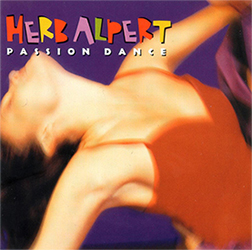 notified me that he was going to be presenting my interpretation of Stevie Wonder's "Go Home" as part of a group of Latin Jazz interpretations of Stevie's songs. For me, I am always thrilled to be a part of Saúl's FIESTA JAZZ program, which airs every Saturday night. Somehow, Herb Alpert's version of "Creepin'" came to mind, and I thought to myself that Saúl had most likely never heard it. And so, I sent it to him, and he was thrilled to have it. I think that it was a bit too late for his most recent program, but I'm certain that he will play it at some point. As I listened to this track again, I decided to simply put in the work, and to write out a nice composite lead sheet of Oskar Cartaya's wonderful arrangement. The performance features the great playing of these musicians: Otmaro Ruiz (Keyboards); Joe Rotondi (Ac. Piano); Michito Sánchez (Conga) and Walter Rodríguez (Drums). notified me that he was going to be presenting my interpretation of Stevie Wonder's "Go Home" as part of a group of Latin Jazz interpretations of Stevie's songs. For me, I am always thrilled to be a part of Saúl's FIESTA JAZZ program, which airs every Saturday night. Somehow, Herb Alpert's version of "Creepin'" came to mind, and I thought to myself that Saúl had most likely never heard it. And so, I sent it to him, and he was thrilled to have it. I think that it was a bit too late for his most recent program, but I'm certain that he will play it at some point. As I listened to this track again, I decided to simply put in the work, and to write out a nice composite lead sheet of Oskar Cartaya's wonderful arrangement. The performance features the great playing of these musicians: Otmaro Ruiz (Keyboards); Joe Rotondi (Ac. Piano); Michito Sánchez (Conga) and Walter Rodríguez (Drums).
On a brief side note, a personal remembrance of the one time that I had the privilege and pleasure of playing with conguero Michito Sánchez, and it's a bit ironic now that it took place in 1999 just 2 years after Herb Alpert's recording and subsequent "world tour" with that same group. On May 8th, 1999, Dave Samuels (Vibes/Marimba), Dave Valentín (Flute) and me, together as the Caribbean Jazz Project was reforming, we flew to Los Angeles for a concert in Bakersfield, and for that one gig, we were so lucky to add into the mix: Eddie Resto (Bass), Alex Acuña (Drums/Timbal Kit) and the aforementioned Michito Sánchez. Not sure how we pulled it off, apart from the exceptional musicianship of the latter three players with only the most brief of rehearsals and perhaps a soundcheck. But, it is a memory that has stayed with me all of these years. Now, knowing this, let us take a look at the arrangement.
Firstly, on the original version by Stevie Wonder, the song is played 1/2-step above where Oskar Cartaya's arrangement places the key for Herb Alpert's trumpet. So, any Letter [A], the verse is now in D minor, where Stevie's version has it in Eb minor. I don't know why, but flat keys, to these ears, always make a piece sound darker. So when you add in the element that the original version is felt as a ballad and played roughly at a tempo of Q=91, and then you have Herb Alpert's version 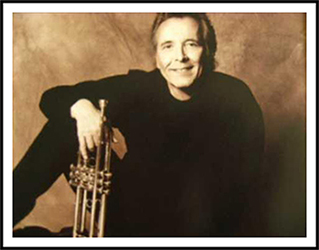 which is played as a much brighter Cha-cha-cha @ Q=126 - that is quite a difference right there. But keys and tempos aside, the romance of the song is felt by any listener no matter what. In the [I]ntro of the original, Stevie foreshadows an important element to be heard vocally later with one his synthesizers as it plays "In (C) My (G) Dreams (F)" - for me, this is a really great touch. Within Oskar's treatment, as great as it is, that small element is never alluded to. The harmony for the [I] section which sets up the entire song is really interesting because you have, what I have chosen to label as, an F7(sus) sonority, spelling up: Bb-Eb-F-Bb which moves down a 1/2-step to A-D-E-A, which changes the chord to Fmaj7(6). It is a very unusual chordal movement that can make the F7(sus) seem as if it is a minor sonority - but there is no 3rd within the chord - so it becomes a matter of how the listener perceives it. which is played as a much brighter Cha-cha-cha @ Q=126 - that is quite a difference right there. But keys and tempos aside, the romance of the song is felt by any listener no matter what. In the [I]ntro of the original, Stevie foreshadows an important element to be heard vocally later with one his synthesizers as it plays "In (C) My (G) Dreams (F)" - for me, this is a really great touch. Within Oskar's treatment, as great as it is, that small element is never alluded to. The harmony for the [I] section which sets up the entire song is really interesting because you have, what I have chosen to label as, an F7(sus) sonority, spelling up: Bb-Eb-F-Bb which moves down a 1/2-step to A-D-E-A, which changes the chord to Fmaj7(6). It is a very unusual chordal movement that can make the F7(sus) seem as if it is a minor sonority - but there is no 3rd within the chord - so it becomes a matter of how the listener perceives it.
As I was trying to have my 2-stave composite lead sheet present both the keyboard part(s) and Oskar's wonderful bass part, it made it a bit difficult for also presenting the trumpet melody. There just wasn't any space in its real register, so I had to place it one octave above its actual sound, so that's where you now see it when you look at the music pages. Forgive me for that, I was trying to keep it from looking too cluttered. The element of structure has to be addressed too. When writing out music that is intended to be presented to another musician, courtesy has to always be considered! Ideally, the musician, who is reading your work, you want him/her to be able to read from left to right as the song moves along. You don't want the player to arrive at Pg. 3 and then suddenly have to jump back to Pg. 1 via a D.S., and then having to use a Coda sign to jump back to Pg. 3. In real life, these things happen all the time. As it always is, page count becomes a big consideration too. If someone is going to have to put together 2 music stands, you really would not want to have more than 5 pages. In this case, for the web? I did not want this lead sheet to be longer than 4 pages. In order to accomplish that, I had to use not only a D.S. and a Coda, on Pg. 1 going ahead to Pg. 2 - but I had to employ a D.D.S. on Pg. 3 to get back to [B2] on Pg. 2, and then a Double Coda on Pg. 3 to get us to [A4] on Pg. 3. Even with this explanation, you can see how complex it gets - and I was trying to keep it simple!!! Ay!!! The laughable thing about all of this is that today's musicians are often just reading from tablets - almost no more music stands and full-size music paper.
When we arrive at Letter [A], where the lyrics would have begun, now Herb's trumpet enters. You will see that, to keep things on Pg. 1, I had to employ a 1st & 2nd Ending. So, you end-up with an [I] & [I2] sandwiched around [A] & [A2] - all of these sections are 8 bars long. Harmonically speaking, Letter [A] is treated the closest to Stevie's original, but here you have Joe Rotondi's piano marking the melody with simple yet beautiful harmonies. Bars 5-8 add nice sonorous touches to what is already there. Using the 2nd Ending, [A2] becomes a nice showcase for Oskar's sense of harmony and arranging as he cycles a new harmonization around the same melody. As a fan of such things, this section really makes your ears and eyes pop open. From here, the level comes down a bit for a reprise of [I3] which, this time, is only 4 bars in length. It is also important to note the sustained beauty of Otmaro Ruiz' synth orchestrations give warmth and a more lush texture to the section.
At the end of [I3], with the accented and held chord on beat 2 of bar 4, that E7(#5#9) provides a great deceptive cadence by not resolving to either Am7 or Fmaj7 and instead, it leads us to Dmaj7. And so, as the bridge, letter [B] arrives, also arriving at the same time is the campana on the right side of the mix. Cartaya flexes his creative muscles as he uses bar 1 to propel us into the 12 bar section. Initially between the accents, Joe Rotondi provides some really nice montuno work to glue all the rhythms together. Meanwhile, all of the creative chord changes that Oskar has inserted provided a real challenge for my ears - I hope that I did them justice. I especially liked the accented chords in bar 5 with the subtlety of the Dmaj7#5 chord really standing out in bar 6. With a long held A7(#9#5) in bars 11-12, we now take the D.S. back to [A] on Pg. 1.
On the original version by Stevie Wonder, I have to note the vocal presence of the spectacular Minnie Riperton, as she is featured with Stevie in both of the [A3] sections. She sounds so great - floating around his vocal without the intention of trying to make it an exact double. Of all things, on October 3rd, 1971, my path crossed with Minnie's as I played a concert at Joliet Prison, just southwest of Chicago, with singer Connie Francis, and Minnie was there as part of the Rotary Connection. Playing guitar with the Rotary Connection was none other than Phil Upchurch, with whom I would become friends years later. At that moment, the most famous inmate @ Joliet was mass murderer Richard Speck, known for killing 8 nurses with a knife. That fact alone was terrifying enough, not to mention that when those steel bars close shut behind you, the thought crosses your mind that you might never get out of there! All this and then, because of my extremely long hair at that time, we all, including Connie, had to submit to a very serious full body search of our persons, and she was FURIOUS about that! She was furious at me and wanted to fire me, almost on the spot! Her husband, Izzy, stepped in and apparently told her: "You can't fire him, he's too good!" All kind of laughable given that, not too long afterwards, their marriage would end, because he was found to be an abuser. It is all part of the crazy path that life puts one on when you're just trying to learn how to play, and to get better. And now, perhaps this is a good moment to share Stevie Wonder's romantic lyrics for the song. They are as such:
[A]
I can hear you sighin'
Sayin' you'll stay beside me
Why must it be
You always creep
Into my dreams?
[A2]
On the beach we're sittin'
Huggin', squeezin', kissin'
Why must it be
You always creep
Into my dreams?
In my dreams
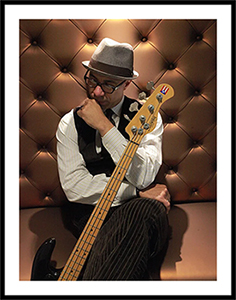
[B]
When I'm a sleep at night, baby
I feel those moments of ecstasy
When you sleep at night, baby
I wonder do I creep into your dreams
Or could it be, I sleep alone in my fantasy
[A3]
featuring Minnie Riperton
Oh, love is so amazing
Guess you will be stayin'
So let it be
That you always creep
Into my dreams?
In my dreams
[Harmonica Solo]
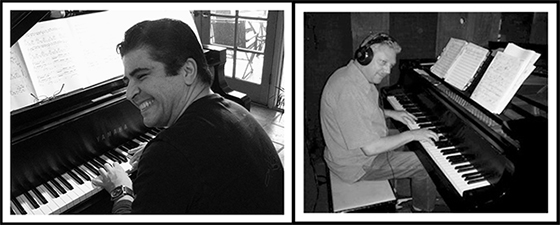
[B2]
[A3]
featuring Minnie Riperton
[Fade]
In my dreams
In my dreams
As one would expect another Marc Quiñones avanico leads the band into a reprise of [A3], and the Coda at the end of bar 8 leads us into a nice Joe Rotondi montuno at Letter [C] which, in essence, begins a solo section for Herb Alpert. I have mapped out this section as [D]-[D2]-[D3] with each one being 8 bars in length, and bars 5-8 echo the chordal sounds of the Intro [I].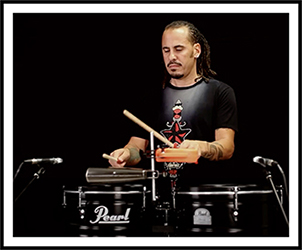 Eventually we emerge from the solo section taking the 2nd Ending for [I4]. This leads us into the D.D.S. and back to [B2] on Pg. 2, where again, the campana arrives with the section. When crafting a solo section within any arrangement, you want to first think of the soloist. In this case, that is Herb Alpert, who is not known as a natural improviser, but with all of his musical experience, one can count on him to play something musical. So, Oskar came-up with some changes that capture the feeling of Letter [A] without duplicating it exactly. So, what he has done is to give us continuity with refreshing changes. The arrangement emerges from the solo with another 4 bar [I4] and, as I just mentioned, this is where we take the D.D.S. to [B2] where the Double Coda will finally get us to the bottom of Pg. 3 and [A4]. Eventually we emerge from the solo section taking the 2nd Ending for [I4]. This leads us into the D.D.S. and back to [B2] on Pg. 2, where again, the campana arrives with the section. When crafting a solo section within any arrangement, you want to first think of the soloist. In this case, that is Herb Alpert, who is not known as a natural improviser, but with all of his musical experience, one can count on him to play something musical. So, Oskar came-up with some changes that capture the feeling of Letter [A] without duplicating it exactly. So, what he has done is to give us continuity with refreshing changes. The arrangement emerges from the solo with another 4 bar [I4] and, as I just mentioned, this is where we take the D.D.S. to [B2] where the Double Coda will finally get us to the bottom of Pg. 3 and [A4].
[A4], at its core, revisits [A2] but like all good arrangers, you don't want to fire all of your bullets too early on, so here, the keyboard orchestrations of Otmaro Ruiz appear and add a new level lushness to the presentation. Once again, from the rhythmic perspective, the campana arrives for the 1st time in any [A] section giving everything a little extra push. I especially loved hearing the chromatically ascending line in bar 1, where you hear the D-natural on top of the Em7sus chord moving to Eb on top of the A7(b5) chord. It just sounds beautiful. Then, in bars 3-4, the harmony descends chromatically, where you begin with E-natural (Fbb) on top of the Dm7b5 chord to Eb on top of the Cm7 chord, followed by D-natural on top of the Bm7b5 chord - and lastly, Db on top of the Bbm7 chord. This just sounds so great while the trumpet melody is playing exactly the same melody as it has been. One other orchestral color that I hear is that these lush harmonies of Otmaro's were doubled by the sampled voice of Lani Hall -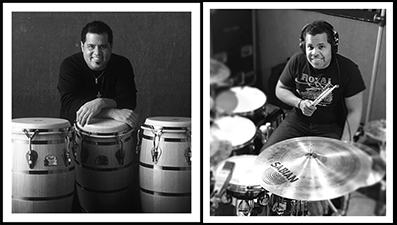 as she is no stranger to the beauties of vocalese because of her musical connection to the early music of Sergio Mendes' Brasil '66. as she is no stranger to the beauties of vocalese because of her musical connection to the early music of Sergio Mendes' Brasil '66.
With Letter [E] comes our basic montuno from Rotondi along with a bit of a shift in the mix bringing Walter Rodríguez' drums more in focus, but with the main emphasis, as it always is and should be on the big conga tumbao of Michito Sánchez. Throughout this section, which obviously functions as a Fade, Herb Alpert loosely improvises throughout and does some of his best playing - including bluesy references and some chromaticism. Both are so nice to hear. Once again, Otmaro, being one of our most creative spontaneous orchestrators, adds in some very subtle and even eerie textures to support all that is unfolding as the music slowly comes down in level. I have always felt that one of the great things about any fade is that, at its best, it should make the listener wish that the fade had never happened, and make them wonder what went on after the fade had ended?
When I began to write this piece, a process that can take several days, it was really intended to focus on Latin Jazz or Latinized instrumental versions of Stevie Wonder songs with the focus here on Herb Alpert's wonderful version of "Creepin'." Now, as we draw near the end of the task of writing and storytelling, I want to share with you all, those of you who have actually gotten this far, a few of my favorite Jazz interpretations of Stevie's remarkable song catalog.
If I had to choose one recorded performance that still stands to this day as the most emotional and remarkable, it would have to be the brilliant Freddie Hubbard's 1974 take on the ballad, "Black Maybe" from his album "HIGH ENERGY"(Columbia) which also featured another Stevie tune, "Too High." PLEASE listen to Freddie playing. Oh how I miss hearing him
On the more experimental side, Herbie Hancock presents a take on Stevie's "You've Got It Bad Girl" where one can barely make out what fragment of the piece Herbie chose to use as the springboard for masterful solos from Herbie, Michael Brecker and Jack DeJohnette. Played at burning tempo, John Scofield, Dave Holland and Don Alias make up the rest of the ensemble. This all took place for Herbie's 1996 album,
"THE NEW STANDARD"(Verve).
Another one of my all-time favorite melodic voices is Stanley Turrentine who, in 1986, recorded an entire album of Stevie Wonder songs and guess what? "Creepin'" was included! The album was titled: "WONDERLAND"(Blue Note) with Ronnie Foster as the arranger.
I also enjoyed pianist Danilo Pérez' reading of Stevie's "Overjoyed" which appears on his album, "...TILL THEN"(Verve) from 2003.
Emotionally speaking, I would still have to say that my absolute favorite version of any Stevie Wonder song, as interpreted by a great Jazz musician, has to be by tenor saxophonist Bob Malach, who for decades I had always known him as Bobby Malach, with the superb WDR Big Band from Köln, Germany playing a very special Bob Mintzer arrangement of Stevie Wonder's "The Secret Life of Plants." I found everything about this performance to be so very moving, because it exemplifies what is so great about the reading of a ballad when it is played with such emotional depth, feeling and a sense of space, time, and patience. It was so wonderful to hear Bobby playing like this, set within the lush harmonic support provided by Mintzer and WDR - especially the sonorous woodwind colors. For me, this became a work, a performance of transcendent grace and beauty. Something to be treasured.
Addendum: I forgot to include a little anecdote about my son, Heath, who back in the '70s, during the earliest years of his life, we must have been playing a lot of Stevie Wonder at home - albums like: "INNERVISIONS"('73), "FULFILLINGNESS' FIRST FINALE"('74) and "SONGS IN THE KEY OF LIFE"('76) would have been around then. Heath couldn't exactly say Stevie Wonder's name, so he would call him, "Tee-tee Wah-wah"!!! I have never forgotten that!
On the other side of all of this is having great Jazz musicians be forced to play songs from Pop, Rock or R&B that, under normal circumstances, they would never choose to play. Such was the case when tenor saxophone giant Dexter Gordon was brought into the studio by Columbia Records in 1977 to record a version of "Isn't She Lovely." It was to be a single and it beautifully produced and arranged by Leon Pendarvis (Piano) and featured Mike Mainieri (Vibes), Bob Babbit (El. Bass), Chris Parker (Drums), Errol "Crusher" Bennett (Perc.), and lastly, Cornell Dupree and yours truly (El. Guitar). I felt really badly for Dexter - but, these things do happen when record labels and executives have the misguided idea of trying to help an artist "reach a wider audience." This kind of thinking is rarely rewarded with great and lasting success.
In closing, here is what I wrote about my own interpretation of Stevie Wonder's "Go Home," a song that I have always loved since first hearing it on his 1985 album, "IN SQUARE CIRCLE"(Tamla). It's so fascinating to me how so many great musicians and composers relate to their own sense of what Latin music is, or might be. The cowbell patterns, if you can call them that, that appear within Stevie's original version have nothing at all to do with any of the classic mambo bell or cha-cha bell patterns known to most musicians and fans of the genre. So, given that, I felt that I could do a loving interpretation of the tune, but with a more authentic approach from the rhythmic side of things. For this interpretation, we decided to alternate between the Oriza rhythms, and what Marc Quiñones describes as a double-bell pattern for most of the body of the song. I had never really heard something like this until, totally by accident, I saw the YouTube video of Marc demonstrating his Pearl salsa bell. Along the way, I wrote out a couple of reharmonizations of one of the contrasting sections to the main melody, and again, those sections were performed to perfection by Rob Mounsey. This is also the only tune on this recording, and since "Zancudoville" from "PARTING SHOT," where I played played with a very particular kind of 335 overdrive sound - one which I love very much because of the nasty, wicked feeling that it conveys. This is the first time in ages that I can recall covering an R&B tune from the past. So, there you have it.
Speaking of prison gigs, I had to go back into my Datebook for 1974, and found that we had two prison gigs, back-to-back with Esther Marrow. On Tuesday, December 17th, 1974, we played the Queens House of Detention in Kew Gardens. And then, on Wednesday, December 18th, we played Riker's Women's Prison which was actually located in downtown Manhattan, in Greenwich Village. That facility would close shortly thereafter. For those gigs, the band was: Paul Griffin (Piano); Bill Salter (El. Bass); Chris Parker (Drums) and yours truly. Amazing that we made it out alive!!! And so, to bring this particular piece of writing full circle, and thinking about the current state of life in the USA under this horrific president, I think of singer, Esther Marrow who might say to me, spoken in a most rueful tone: "Steve, sometime(s) life jus(t) be's that way!" Many nights at Mikell's after virtually everyone had gone, Esther and the band, sometimes with Pat Mikell, we would all be sitting in the back, in the dark and telling stories, etc. and Esther said that phrase to me several times as my own life was in great turmoil in 1974 and beyond. As for her words? What can I say? Ain't it the damn truth!"
As always, my most sincere "Thank you!" to everyone who visits these pages with regularity. PEACE, LOVE and ETERNAL FLOWER POWER!!! All so very much needed in these dark times - Steve
[Photos: Herb Alpert
Oskar Cartaya
Otmaro Ruiz-Joe Rotondi Collage
Marc Quiñones
Michito Sánchez-Walter Rodríguez Collage]
|




 Eventually we emerge from the solo section taking the 2nd Ending for [I4]. This leads us into the D.D.S. and back to [B2] on Pg. 2, where again, the campana arrives with the section. When crafting a solo section within any arrangement, you want to first think of the soloist. In this case, that is Herb Alpert, who is not known as a natural improviser, but with all of his musical experience, one can count on him to play something musical. So, Oskar came-up with some changes that capture the feeling of Letter [A] without duplicating it exactly. So, what he has done is to give us continuity with refreshing changes. The arrangement emerges from the solo with another 4 bar [I4] and, as I just mentioned, this is where we take the D.D.S. to [B2] where the Double Coda will finally get us to the bottom of Pg. 3 and [A4].
Eventually we emerge from the solo section taking the 2nd Ending for [I4]. This leads us into the D.D.S. and back to [B2] on Pg. 2, where again, the campana arrives with the section. When crafting a solo section within any arrangement, you want to first think of the soloist. In this case, that is Herb Alpert, who is not known as a natural improviser, but with all of his musical experience, one can count on him to play something musical. So, Oskar came-up with some changes that capture the feeling of Letter [A] without duplicating it exactly. So, what he has done is to give us continuity with refreshing changes. The arrangement emerges from the solo with another 4 bar [I4] and, as I just mentioned, this is where we take the D.D.S. to [B2] where the Double Coda will finally get us to the bottom of Pg. 3 and [A4]. as she is no stranger to the beauties of vocalese because of her musical connection to the early music of Sergio Mendes' Brasil '66.
as she is no stranger to the beauties of vocalese because of her musical connection to the early music of Sergio Mendes' Brasil '66.